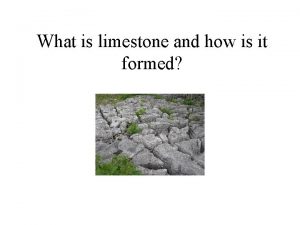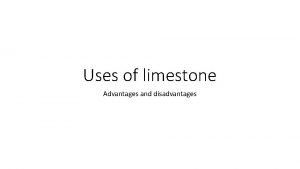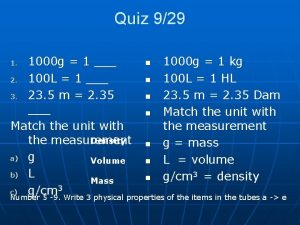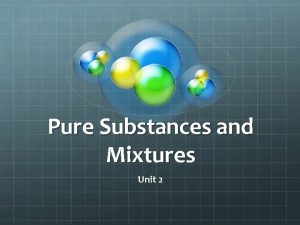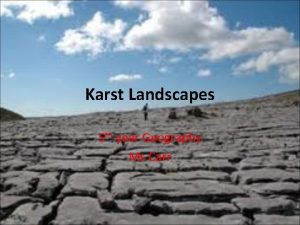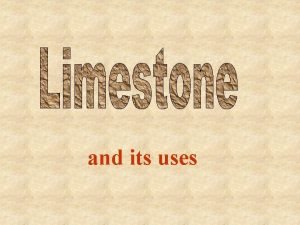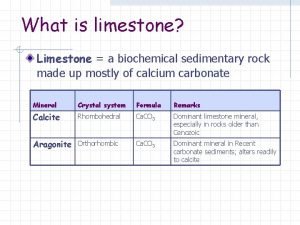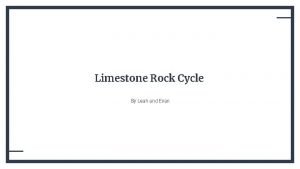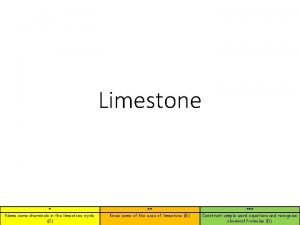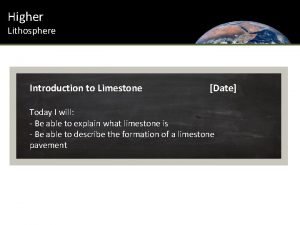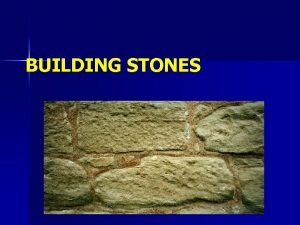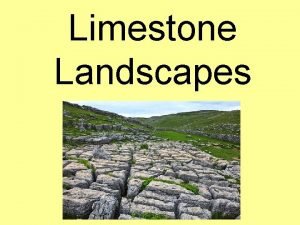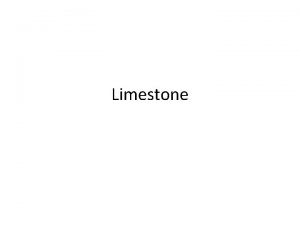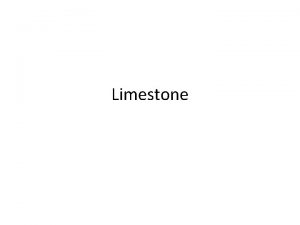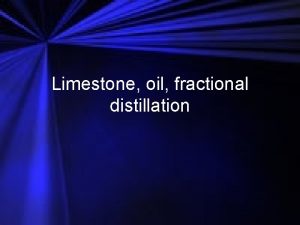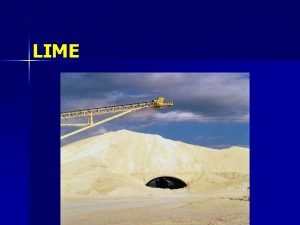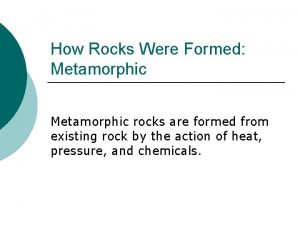What is limestone and how is it formed














- Slides: 14


What is limestone and how is it formed?

How is Limestone formed?

Formation 1. Limestone is formed from the fossilised remains of countless marine plants and animals, such as corals, which lived during the Carboniferous period, 345 - 280 million years ago. 2. These former sea beds were moved from the Equator due to continental drift and forced above sea level 280 230 million years ago.

Carboniferous limestone landscapes are the result of: - • The rock is divided into blocks as a result of breaks between the rock beds (bedding planes) • Vertical cracks (joints) are created as the limestone dries out and pressure is released. joint bedding plane • permeability - water passes easily through the rock by following the bedding planes and joints.

Limestone Weathering and Erosion

How limestone scenery is eroded and weathered: 1. Stripping topsoil to expose pavement to erosion. 2. Eroding away all the limestone in U-shaped valleys. 3. Plucking and abrading valley sides into scars. 4. Erosion of valleys on the surface during glaciation, features that are now dry valleys. 5. Enlarging passages with glacial meltwater. The creation of screes by frost-shattering, and leaving erratics on the surface are not limestoneonly features! They occur with other rock types.

Limestone Weathering Limestone is a hard rock, but when exposed to the environment, weathering can produce dramatic landscape features. Weathering can be defined as the breakdown of rock by exposure to the environment. It can be physical, chemical or biological. Chemical acid rain and pollution Biological animals and plants Physical wind and ice

Limestone weathering Carboniferous limestone is made up of calcium carbonate (Ca. CO 3). Calcium carbonate is vulnerable to chemical solution, a form of chemical weathering caused by rainfall. When rainwater absorbs carbon dioxide, it forms carbonic acid (H 2 CO 3). This is a weak acid which over time will dissolve limestone to produce various exotic features. This process is known as chemical solution or limestone solution.

Chemical solution

Limestone weathering Press play on the animations below to see different ways in which limestone is weathered.

Limestone properties Unlike some other forms of limestone, carboniferous limestone is very hard. It has been used as a building material for thousands of years. Carboniferous limestone was even used to build the Great Pyramid of Giza, which is the only wonder of the ancient world still standing: It is over 4, 500 years old.

Limestone properties This gravestone is also made out of carboniferous limestone. It has only been around for 300 years – but it’s not in as good shape. There is even a hole right through the middle.

Why the difference? What factor do you think caused the extra damage to the gravestone? Animal damage? Precipitation? (rainfall) Plant damage?
 Formation of a swallow hole
Formation of a swallow hole Advantages and disadvantages of limestone
Advantages and disadvantages of limestone Sulfur dioxide and limestone
Sulfur dioxide and limestone Density of limestone
Density of limestone Is bronze an element or compound
Is bronze an element or compound Karst definition geography
Karst definition geography Limestone ridges built by tiny animals
Limestone ridges built by tiny animals Limestone used for
Limestone used for Is limestone biochemical
Is limestone biochemical Limestone rock cycle
Limestone rock cycle Limestone cycle
Limestone cycle Horizontal lines in limestone
Horizontal lines in limestone Basalt limestone
Basalt limestone Limestone ridges built by tiny animals
Limestone ridges built by tiny animals What is this ?
What is this ?
